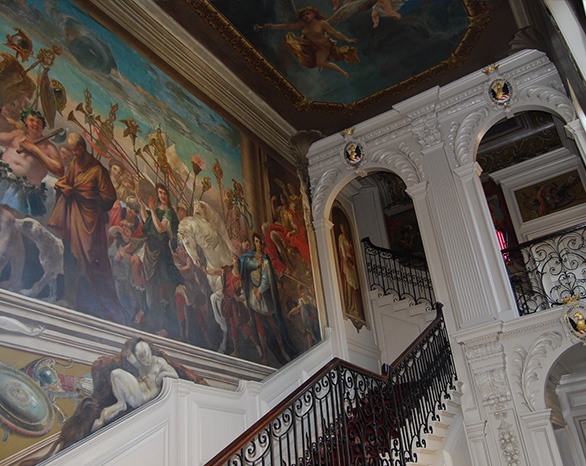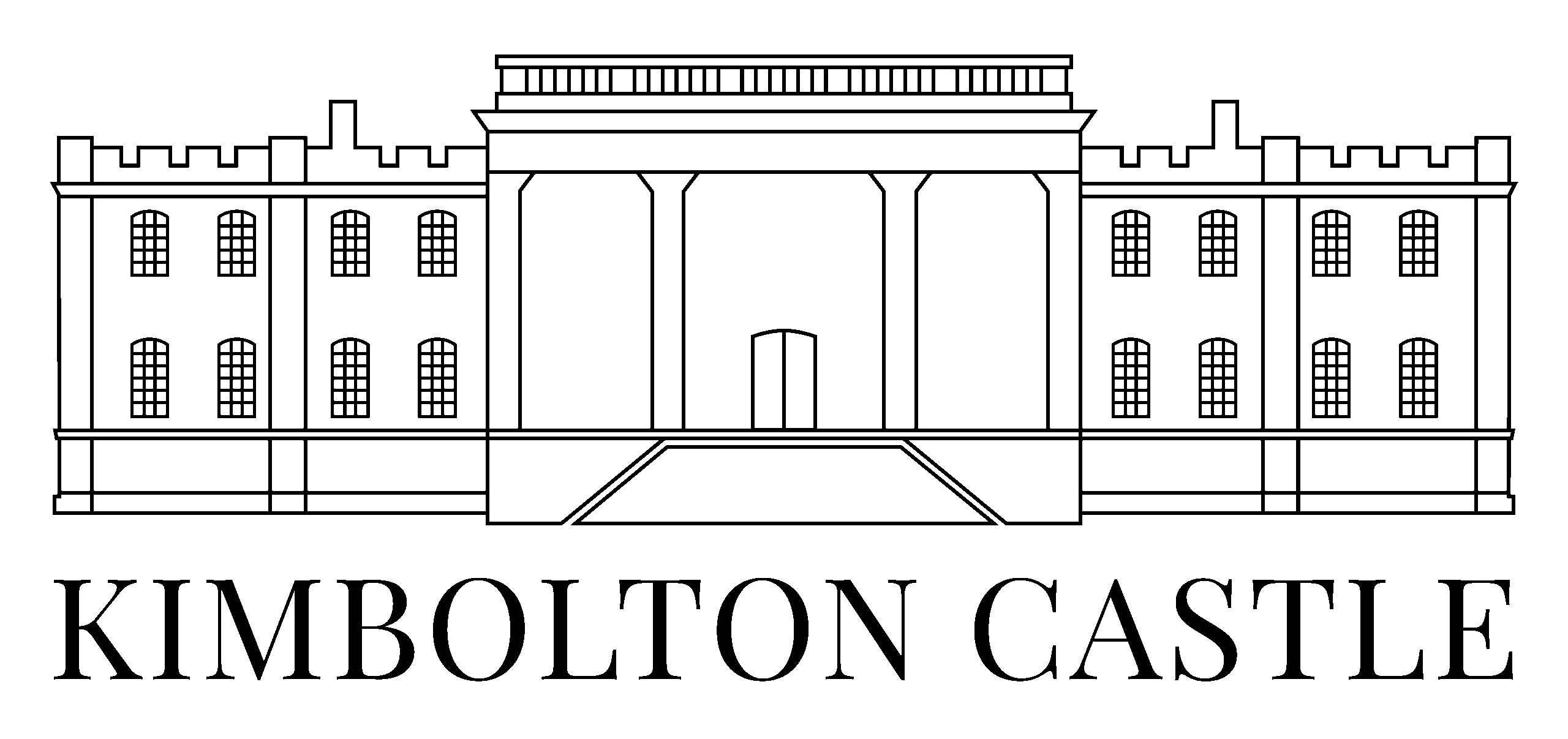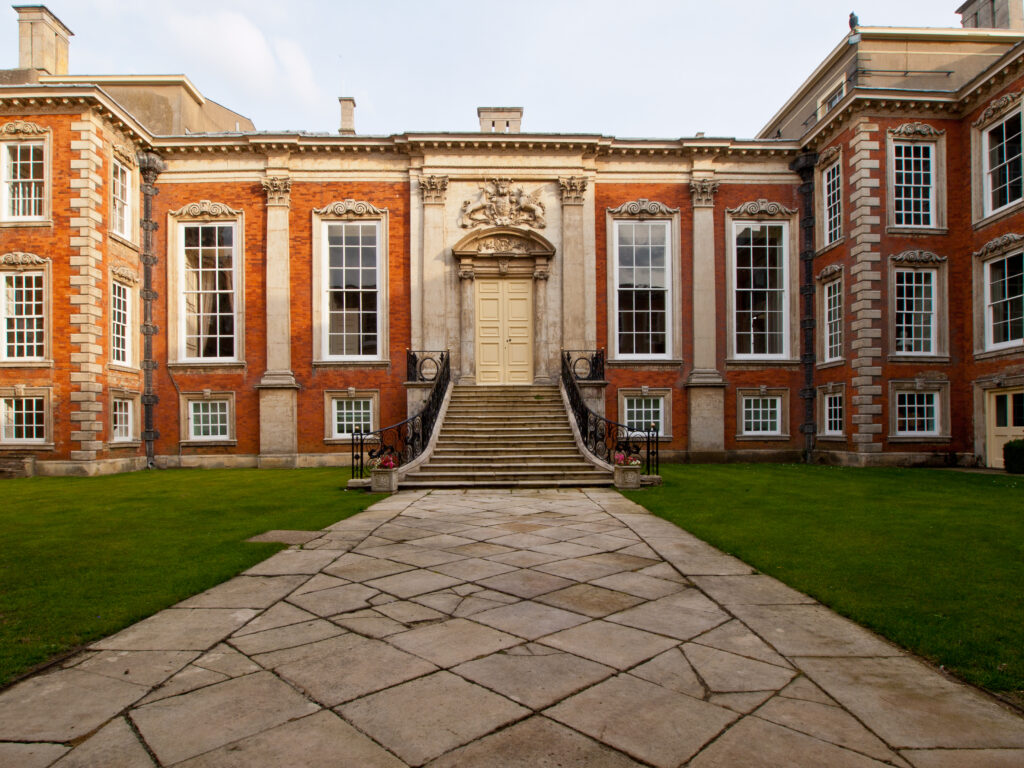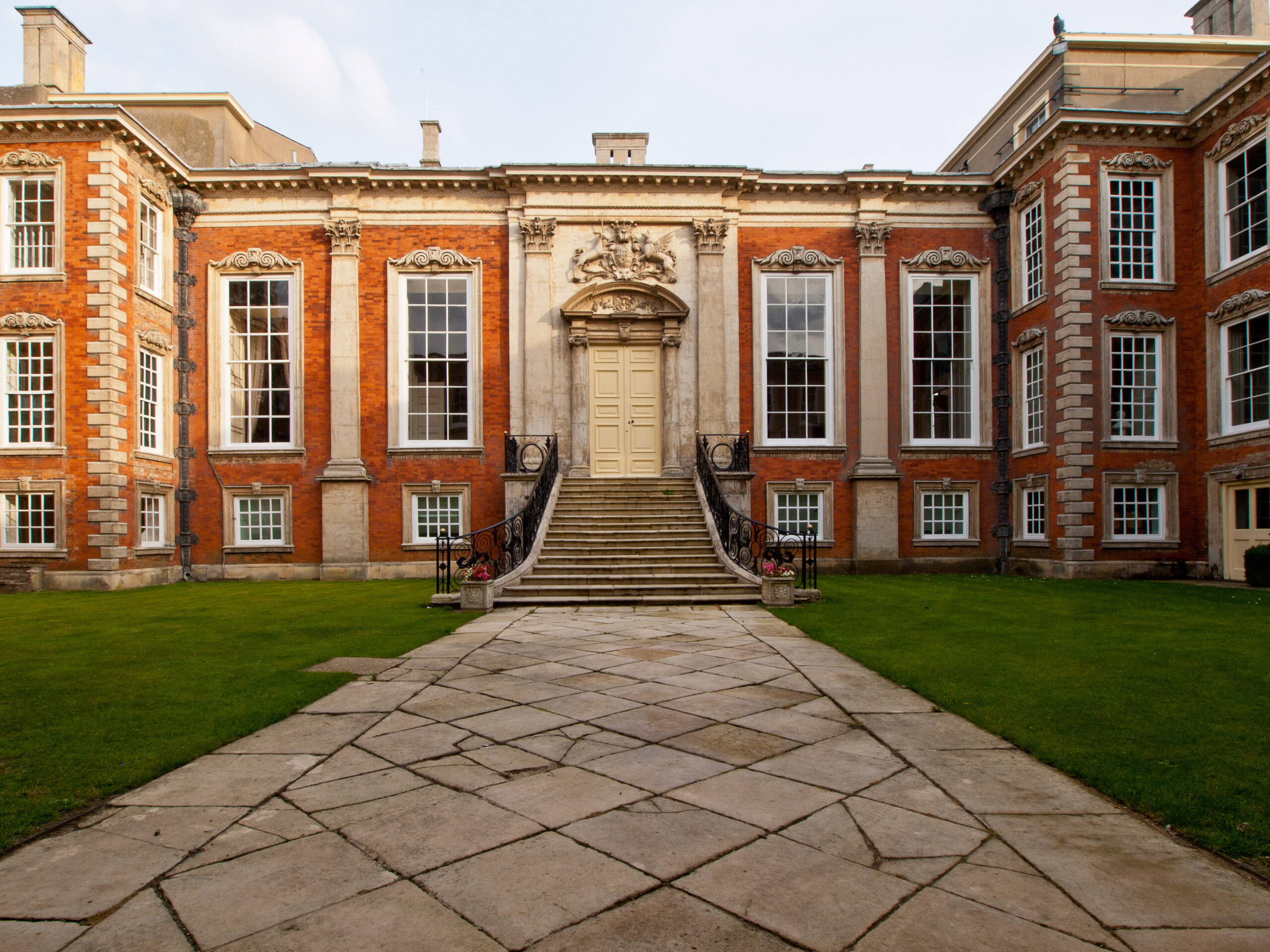
Vanbrugh’s work at Kimbolton Castle
A Castle reimagined in English Baroque
Collaborators and creative vision
By the beginning of the 18th century, Kimbolton Castle was described by historian Simon Thurley as “an architectural hotchpotch.” Its medieval towers stood alongside Tudor rebuilding, Jacobean gables, and Henry Bell’s 1690s courtyard and White Hall. When a round tower on the south front collapsed during Charles Montagu’s tenure, it was clear the Castle needed a coherent redesign. The 4th Earl of Manchester turned to his friend Sir John Vanbrugh, dramatist, political radical, and rising architect, to bring order to the building.
Recasting the façades
In 1707, Vanbrugh began what became the second phase of the Castle’s “Great Rebuilding.” His aim, as he put it, was to give the house
“something of the Castle air, tho at the same time to make it regular.”
He remodelled not just the damaged south front but eventually all four elevations.
The result was a unified composition with:
- Battlemented parapets and prominent chimneys recalling the Castle’s medieval origins.
- Classical symmetry and proportion, imposing order on a previously irregular structure.
- A deliberately austere treatment, with few decorative flourishes — Vanbrugh believed true beauty came from “Figure and Proportions” rather than ornament.
Although Manchester had initially wanted a more classical design, he was persuaded by Vanbrugh’s vision. The castellated grandeur also linked the family more firmly to the myth of ancient lineage and gave visual resonance to the Castle’s most famous resident — Katherine of Aragon, who died here in 1536.
Interiors and new spaces
Vanbrugh was equally ambitious inside the Castle. He insisted that modern entertaining required a “large Noble Room of Parade between the Drawing room and the Bedchamber.” The result was the Saloon, a dramatic new chamber aligned with the central garden axis. Vanbrugh delighted in its connection with the landscape, writing in 1708 that it was:
“almost as big as the Hall, and looks mighty pleasantly up the Middle of the Garden and Canall, wch is now brim full of Water, and looks mighty well.”
Manchester, however, remained closely involved in the interiors, bringing back decoration and furnishings from Italy. Pellegrini, the Venetian painter he patronised, was commissioned to paint the great staircase. His Triumph of Julius Caesar winds around the walls in a vivid sequence based on Mantegna’s Hampton Court cycle, while the ceiling celebrates William III. The combination of Vanbrugh’s architecture and Pellegrini’s murals created one of the Castle’s most striking Baroque ensembles.
Collaborators and craftsmen
Vanbrugh’s vision was realised through a team of skilled associates:
- Nicholas Hawksmoor, his long-time partner, provided architectural support.
- William Coleman, an experienced joiner and clerk of works, oversaw construction and resolved difficult practical issues such as the placement of the south front door.
- Thomas Nixon (Nixson), the builder, received payments for pulling down and rebuilding the south front, the bow window, chapel wall, and chimneys.
- Antonio Pellegrini, the Venetian painter, filled the staircase with allegory, symbolism, and Venetian warmth.
A Castle reborn
The rebuilt Castle was a statement of identity and ideology. For the Earl of Manchester, Whig politician and diplomat, it projected both his ancient lineage and his modern political and cultural values. For Vanbrugh, it was a chance to experiment with a restrained version of English Baroque — a building of “manly beauty” where history, drama, and architecture combined.
Though Manchester later added a classical portico to the east front, Vanbrugh’s work defines the Castle’s character to this day. The 1911 Country Life article praised its “castle air” and noble proportions, and modern visitors still see Kimbolton through the lens Vanbrugh created: a medieval fortress transformed into a stately Baroque home, still alive as the heart of Kimbolton School.



